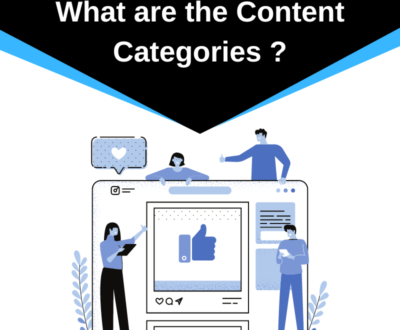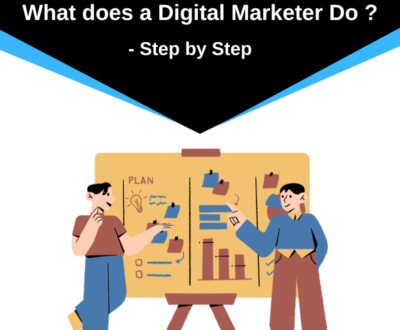
The Four C’s of digital marketing are a framework that helps businesses understand and navigate the complexities of the digital landscape. They represent the key elements that are crucial for crafting effective Digital Marketing strategies. Here’s a detailed look at each component:
1. Content
Definition and Importance:
Content is at the heart of Digital Marketing. Content is most important in Four C’s of Marketing. It encompasses all forms of media that a brand uses to engage with its audience, including blog posts, videos, infographics, eBooks, and social media updates. The primary goal of content is to provide value to the audience, whether through information, entertainment, or inspiration, and to build a relationship between the brand and its customers.
Strategies for Effective Content:
- Understand Your Audience: Conduct thorough research to understand your target audience’s needs, preferences, and pain points. Create personas to guide your content creation process.
- Value and Relevance: Ensure that your content is relevant and provides value. Address your audience’s questions and problems with high-quality, informative content.
- Consistency: Maintain a consistent voice and style across all content. Consistency helps in building brand recognition and trust.
- SEO Optimization: Optimize your content for search engines by using relevant keywords, meta descriptions, and internal linking. This increases the visibility of your content and drives organic traffic.
- Engagement: Use interactive content such as quizzes, polls, and surveys to engage your audience and encourage interaction.
Example:
A company that sells eco-friendly products might create content about sustainable living tips, product guides, and case studies of how their products make a difference. This not only provides value but also aligns with the company’s brand values.
2. Context
Definition and Importance:
Context refers to the environment in which your content is delivered and consumed. It involves understanding the broader landscape of your audience’s digital behavior, including where and when they interact with your content. The context helps tailor your marketing efforts to fit specific platforms and user scenarios. In four C’s of Marketing, Context plays its own Role.
Strategies for Effective Context:
- Platform-Specific Strategies: Tailor your content and Marketing Strategies to fit the platform you’re using. For instance, visual content performs well on Instagram, while LinkedIn is more suited for professional and industry-related content.
- Timing and Frequency: Analyze when your audience is most active and schedule your posts accordingly. Different times of day or days of the week might yield better engagement.
- Device Optimization: Ensure your content is optimized for the devices your audience uses, whether it’s mobile, desktop, or tablet. Mobile optimization is crucial given the increasing number of mobile users.
- Personalization: Use data to personalize content and offers based on user behavior and preferences. Personalized experiences are more engaging and effective.
Example:
A fashion brand might use Instagram Stories to showcase new collections in a visually appealing way, while using email newsletters for personalized product recommendations based on previous purchases.
3. Customer
Definition and Importance:
The customer is the central focus of any digital marketing strategy. Understanding the customer involves not only identifying who they are but also comprehending their behaviors, preferences, and journey through the buying process. The goal is to create marketing strategies that meet their needs and expectations.
Strategies for Effective Customer Understanding:
- Customer Research: Use surveys, interviews, and analytics tools to gather insights about your customers. Understand their demographics, interests, and pain points.
- Customer Journey Mapping: Map out the customer journey to understand how they interact with your brand from awareness to purchase. This helps in identifying key touchpoints and opportunities for engagement.
- Feedback and Reviews: Encourage and analyze customer feedback and reviews. This provides valuable insights into customer satisfaction and areas for improvement.
- Segmentation: Segment your audience based on various criteria such as behavior, demographics, or purchase history. Tailor your marketing efforts to address the specific needs of each segment.
Example:
An e-commerce site might use customer data to segment users based on their shopping behavior, offering personalized recommendations and targeted promotions to enhance the shopping experience.
4. Communication
Definition and Importance:
Communication is the backbone of Four C’s of Marketing. Communication refers to how a brand interacts with its audience. It encompasses all channels and methods used to convey messages and engage with customers. Effective communication builds relationships, fosters trust, and encourages action.
Strategies for Effective Communication:
- Multi-Channel Approach: Utilize various communication channels such as social media, email, chatbots, and blogs to reach your audience. Each channel should have a consistent brand message.
- Clear Messaging: Ensure that your messages are clear, concise, and aligned with your brand’s voice and values. Avoid jargon and make your communication easy to understand.
- Engagement and Responsiveness: Actively engage with your audience by responding to comments, messages, and reviews. Prompt responses show that you value customer feedback and are committed to addressing their needs.
- Storytelling: Use storytelling to create emotional connections with your audience. Share stories about your brand’s journey, values, and customer experiences.
Example:
A tech company might use a combination of social media, email newsletters, and webinars to communicate product updates and provide customer support. They could also share customer success stories to build trust and credibility.
More from our blog
See all postsRecent Posts
- On-Page SEO: A Comprehensive Guide October 14, 2024
- The Role of AI in Modern Digital Marketing October 10, 2024
- The Four C’s of Digital Marketing. September 11, 2024









Pingback: How to learn Digital Marketing ? - Jeet Shekhawat